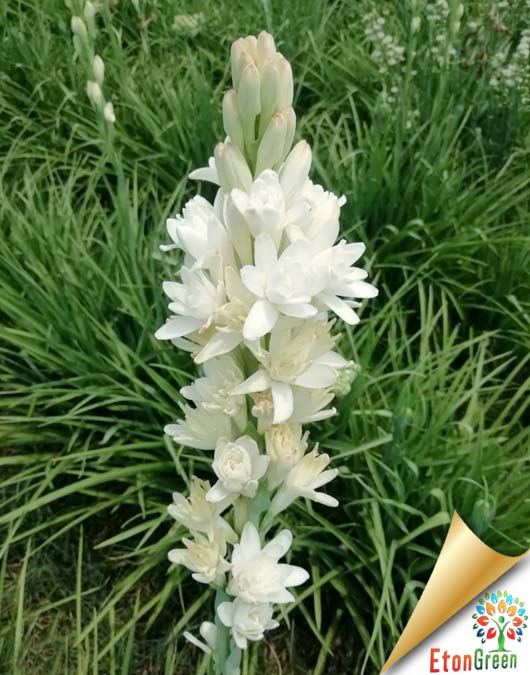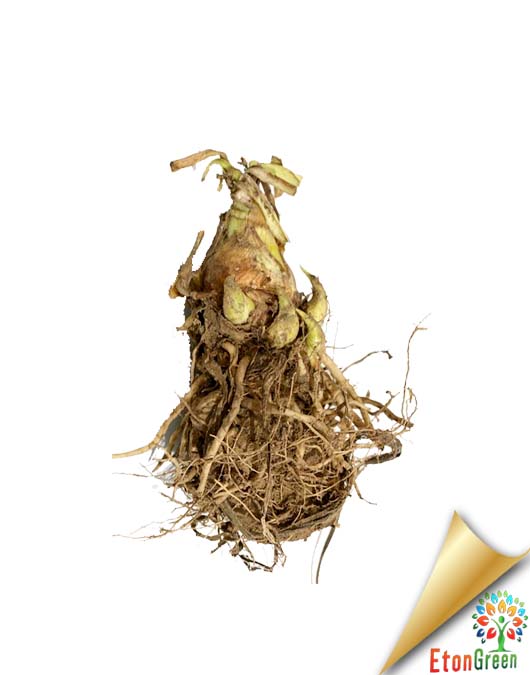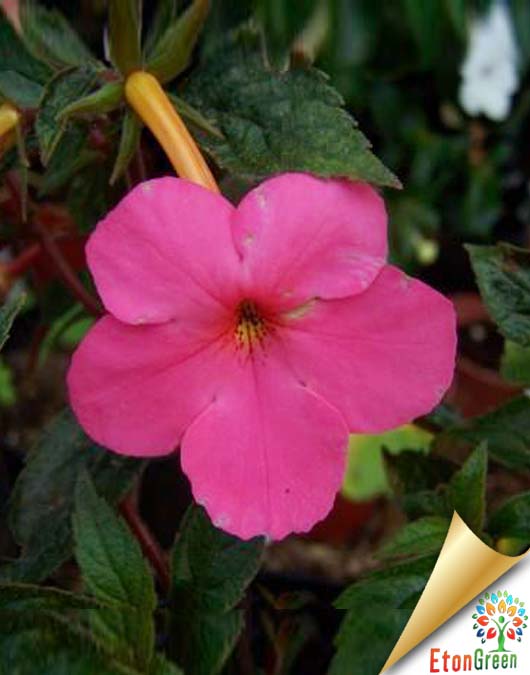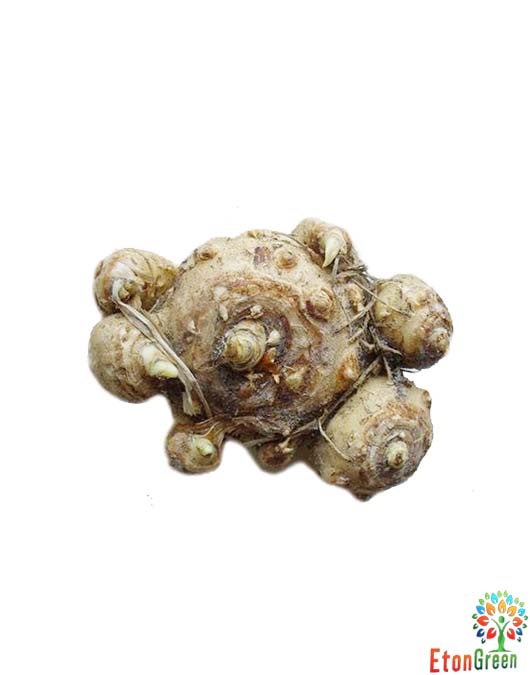Out Of Stock
EtonGreen Achimenese Maxicana (Purple) Flower Bulb (Set of 10 Bulbs)
₹280.00 ₹195.00
- Shipping charge ₹ 90 for entire order
- Achimenes mexicana is a beautiful and easy member of the Gesneriad family that grows from curious elongated scaly rhizomes.
- It has gorgeous blue-purple flowers with a white throat. They are funnel-shaped and the colour is quite hard to capture photographically as in different lights they appear to oscillate between purple-blue and blue-purple.
- It should come as no surprise that this variety is a favorite among many for its high bloom count and solid, rich coloring. An excellent partner for white tuberous Begonias, these two create a gloriously contrasting display. Provide these easy growers with protection from the sun and regular water during active growth, and they’ll return the favor with months of bright blooms! Enjoy!
SKU: EtonMaxicana
Categories: Bulbs, Flower Bulbs Sow in all Season, Rainy Sowing Bulbs, Summer Sowing Bulbs, Winter Sowing Bulbs
Tags: achimenese, achimenese flower bulb, achimenese maxicana bulb, flower bulb, flower bulbs, hanging basket plants, hanging plants, maxicana bulb, succulent plants
Out of stock
Email when stock available
The gorgeous, tubular purple-violet flowers of Achimenes appear on short stems that grow directly from the leaf axils. the ‘Hot Water’ plant continuously blooms for several months if the soil is kept evenly moist at all times. Ideal for an indoor conservatory all year round, or as an outdoor visitor to a hanging basket or pot.
| Weight | 0.5 kg |
|---|---|
| Dimensions | 10 × 10 × 25 cm |
Be the first to review “EtonGreen Achimenese Maxicana (Purple) Flower Bulb (Set of 10 Bulbs)” Cancel reply
Up sells product
- Shipping charge ₹ 90 for entire order
- Eucharis lily (Eucharis x grandiflora) is a graceful bulb that produces fragrant white flowers similar in shape to daffodils. It is native to South America which explains it’s other common name – the Amazon lily.
- A bulbous Amazon lily is a low growing bulb producing star-shaped clusters of white flower.
- Eucharis is a perennial with a bulb 2 to 6 cm in diameter. The stalked leaves are 20 to 55 cm long and 10 to 20 cm broad. Flowers are large, sweet-scented.
- It likes shade and sheltered areas and makes an excellent potted plant
- It can be planted in the garden
- Plant them with their necks slightly above the soil surface
- Plant in a normal potting compost and plant at 3 to 4 cm
- Propagations by offsets can be done in the spring
-
Sunlight Bright light, partial shade Watering Medium Soil Sandy loam soil, well-drained soil Temperature 15 to 30 degrees C Fertilizer Use any organic fertilizer Harvest Season Spring (Flower & Bulb)
Out Of Stock
EtonGreen Achimenes Peach Blossom Light Pink Flower Bulbs For Home Gardening (Pack Of 10 Bulbs )
- Shipping charge ₹ 90 for entire order
- Achimenes species are known by many common names such as Magic Flowers, Widow’s Tears, Cupid’s Bowers, and Hot Water Plants.
- Achimenes are related to the familiar Victorian favorites, African violets, and this variety exhibits similar coloring as some of these gems
- The pretty and charming Achimenes peach blossom is a periwinkle rose pink flower perfect for containers or hanging baskets.
- Achimenes are very attractive pot plants, free flowering and are relatively easy to grow. The Achimenes peach blossom has rose pink flowers with frilly edges.
- Artificial lighting can be used when natural light is not available. When planting, use a humus-rich soil such as African violet mix and choose a site that is in an area of bright but indirect lighting. Avoid direct sunlight.
- Shipping charge ₹ 90 for entire order
- This beautiful bloomer is grown mostly as a flowering houseplant in hanging baskets or mixed containers. As relatives of African Violets, Achimenes fancy more moderate conditions than most outdoor settings provide. They grow best in areas with light to partial shade or dappled sun.
- Choose a spot where your Achimenes will receive light to moderate shade or dappled sun.
- Select a container with at least one drainage hole and fill it with a good quality, well-draining soil. Almost any commercially available potting mix will do the trick.
- Dig small holes and nestle the bulbs 3/4”–1” deep and 3”–4” apart. Don’t worry about which side is up, as they will happily grow from any position.
Related products
- Shipping charge ₹ 90 for entire order
- A wide range of colors and an alluring floral fragrance make freesia hard to resist. With up to eight trumpet-shaped, upward-pointing blossoms on leafless stems, freesias make delightful cut flowers that last a long time in the vase.
- The freesia bulb plant is easy to force indoors on sunny windowsills. Learning how to grow freesias in the garden and freesia flower care will allow you to enjoy these beauties year after year.
- Freesias bloom readily indoors. Plant the bulbs about 2 inches (5 cm.) apart in a pot filled with regular potting soil. Keep the soil moist, but not soggy, and place the pot in a sunny, preferably south-facing window. Expect flowers in 10 to 12 weeks.
- Once the flowers and foliage die back, allow the pot to dry out and place it in a cool location until you are ready to bring them into bloom again.
- Water well through the growing season but cut back during flowering time. Stop watering altogether once the foliage dies down and dries up. Do not over water because it will cause the corms to rot.
- Temperature: Keep Freesia refract plants in cool room with temperatures ranging between 16-18°C (60-65°F) and moderate humidity while they are growing and flowering. Blooms will last for weeks if kept at a maximum of 18°C (65°F). Freesia refract plants need a mild winter temperature of around 10°C (50°F).
- Fertilizer: A liquid fertilizer can be applied as soon as the first growth appears above ground.
- Shipping charge ₹ 90 for entire order
- Calla Lilies make fantastic container and landscape plants, Speckled foliage and gorgeous blooms add a touch of elegance wherever they go, and despite their graceful appearance, they’re remarkably easy to grow.
- Delicate and elegant, our Pink Melody Calla strikes the perfect note to bring harmony to any garden. This plant makes a bold statement with color gradients that start with white, dip into rich pink, and then finish with pale green at the eye. Its large size makes it ideal for prominent positions in the garden. Tall and floriferous, with strong stems that beg to be used for cut flower arrangements.
- Calla lily is easy to grow and add a classy look to perennial gardens, cutting gardens and container plantings.
- Calla lilies grow well in pots and planters. They can be mixed with other annuals, but usually perform better in a pot on their own. The flowers last for weeks.
- Shipping charge ₹ 90 for Entire order.
- Anemone flower can beautify every place with its simplicity and beautiful scent.
- Anemone is perennial flowering plant that have basal leaves with long leaf-stems that can be upright or prostrate. Anemone flower is a plant that can be increasingly found in gardens and terraces. This beautiful flower can beautify every place with its simplicity and beautiful scent.
-
Besides being the most common gift to give to someone, flowers are also beautiful decoration and important ingredients of perfumes and many other things that make our lives more beautiful.
Common Name Anemone or Windflowers Height Up to 2 to 3 feet Flower Colour Random color Bloom Time Spring Difficulty Level Easy to grow - Special Care For Anemone.
- Before Planting : Deep The Bulb into Normal water during 30 Minutes to 45 Minutes.
- Soil: Mix The normal Soil with 30% of Coco Peat & 20% of Vermi Compost ,
- Planting : Bulb is already Medicine Treated , Plant the bulb in Pot One inch deep. There is no need of Water till Germination or a week.
- Shipping charge ₹ 90 for entire order
- Pick these easy-to-grow varieties for the best blooms. It is a rhizomatous herbaceous perennial plant, evergreen where rainfall and temperatures are adequate.
- It has large clumps of broad, arrow shaped dark green leaves up to 45 cm long.
- The inflorescences are large and are produced in spring, summer and autumn, with a pure white spathe up to 25 cm and a yellow spadix. The spadix produces a faint, sweet fragrance.
- Dig up the rhizomes in autumn, usually after the first frost and store for winter.
- Dig a hole about three times as deep as the height of the bulb.
- Set the bulb in the hole, pointy end up, then cover with soil and press firmly
- Space bulbs 8 to 10 inches apart
- Water thoroughly after planting
- Use the potting mix for bulb plantation as Garden soil + Compost + Perlite + Sand (2:2:1:1) Soil + Cocopeat + vermicomposting (2:1:2)
- Keep them adequately fertilized and watered, misting the plant every so often to keep the ambient humidity high
- They are susceptible to aphids so, take a look closely and apply insecticide.
- Shipping charge ₹ 90 for entire order
- While they’re best known as supremely long-lasting cut flowers, Calla Lilies also make fantastic container and landscape plants! Speckled foliage and gorgeous blooms add a touch of elegance wherever they go, and despite their graceful appearance, they’re remarkably easy to grow!
- calla lily is a favored for its beautiful, showy flowers Height ranges from 3 feet.
- For container planting, select a container with adequate drainage holes and fill it with good quality, well-draining soil. Almost any commercially available potting mix will do the trick.
- For outdoor landscape planting, select a spot with well-drained soil where your Calla Lilies will receive filtered light or moderate shade.
- Dig holes and plant the tubers shallowly (no more than 4” deep) with the eyes facing upwards and the tops barely covered with soil or even slightly exposed.
- Water thoroughly after planting, gently soaking the soil to settle it around the tubers.
-
Calla Lily Tips & Tricks
- Snip a few flowers for bouquets or other cut arrangements while in bloom. Doing so will not hurt your plants and having graceful, long-lasting blooms to bring indoors is one of the best reasons to grow Callas.
- Expect roots and top sprouts to form in the fall in warmer regions, with flowers emerging in the spring and summer.
- Amend poorly draining soil with organic material to raise the level 2–3″ and improve drainage as Callas will not thrive in waterlogged soil. Compost, finely ground bark, or composted manure all work a charm and are widely available.
- Examine your tubers and discern where the growing points, or “eyes,” are located. They should be planted with the eyes facing upwards.
- Shipping charge ₹ 90 for entire order
- Kaempferia plant blooms the fragrant flowers. Its flower emerges straight from the ground, even before the leaves appear.
- Kaempferia is a stemless plant producing a pseudo stem with 2 to 4 erect leaves from an underground rhizome that has small tuberous roots. Flowering stems are produced from the rhizome when the leaves are not present. Flowers resemble small orchids or African violets but have just three petals.
- Water a plant when the soil feels dry to touch
- Water thoroughly in the summer and reduce watering for the winter & rainy season
- Try to water the plants in the morning around 8-10am
- You should remove dead, infected or damaged plant parts and throw in the garbage collector
- You should fertilize a plant mostly in the spring season, flower bud stage
- Plant season is in monsoon or autumn season
- Plant the bulb 3 inches deep and provide 3 to 4 inches of planting spacing
- The pointy part should face up
- Add some coarse sand or fine gravel to the soil to help improve the drainage Mulch the potting mix with organic material

























Reviews
There are no reviews yet.